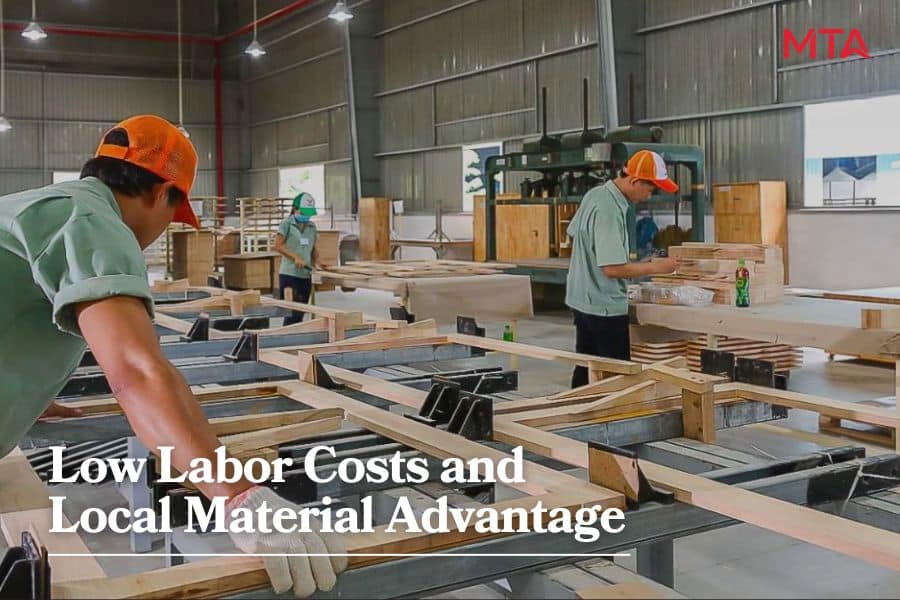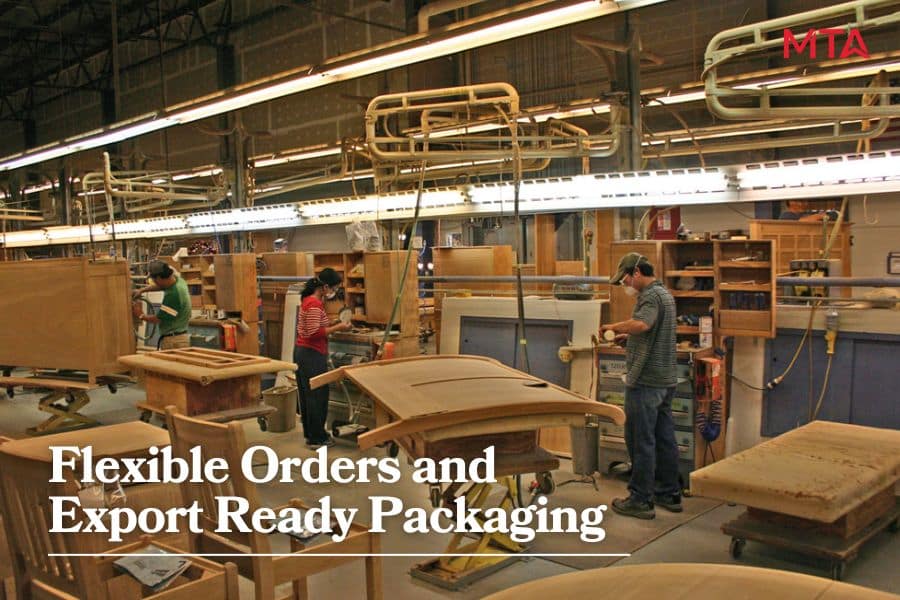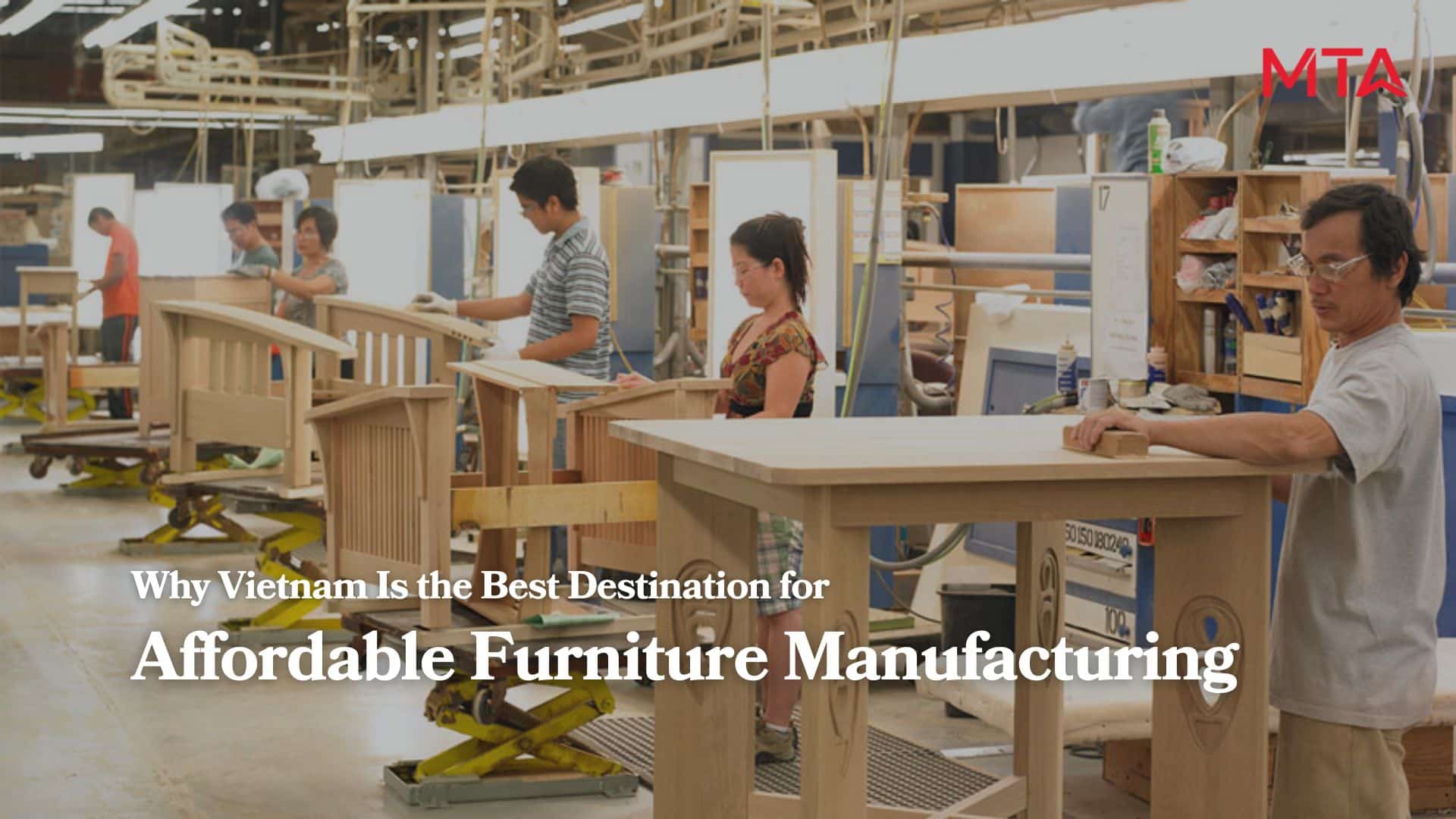Vietnam stands out as one of the most attractive destinations for affordable furniture manufacturing. The country offers a rare combination of low cost, skilled labor, access to local materials, and increasing investment in automation. These advantages make Vietnam a go-to option for buyers looking for furniture that is cheap but still meets international quality and compliance standards. Whether you are a growing ecommerce brand or a global retailer expanding your private label lines, Vietnam’s manufacturing ecosystem is ready to deliver cost-effective solutions without compromising quality.
Inside a Vietnam Furniture Factory: The Key to Manufacturing Affordable Furniture
Many factories across Central Vietnam are becoming prime examples of how affordable furniture does not mean low quality. In this region, labor costs remain significantly lower than in the southern industrial zones, while access to local materials like acacia and rubberwood keeps raw input prices down. At the same time, manufacturers are adopting automation tools such as PU foam injection and semi-automated sanding systems to improve consistency and reduce labor intensity.
A featured factory tour reveals how small to mid-sized facilities in provinces like Quang Nam and Thua Thien Hue are now producing export-grade wooden tables and silica-based tabletops for clients in the United States and Europe. These factories support flexible SKUs, accept mixed containers, and scale production up to 30 containers per month while meeting packaging and compliance standards.
Watch the full factory tour to see how Vietnam’s central provinces deliver both quality and low cost in furniture production.
Low Labor Costs and Local Material Advantage
Vietnam continues to lead Southeast Asia with some of the lowest labor costs in the region. Factory workers typically earn between 250 to 450 dollars per month, allowing manufacturers to maintain highly competitive pricing for their furniture lines. Despite these low wages, many factories still invest in proper working conditions and hold certifications such as ISO 9001, FSC, and BSCI. These credentials make it easier for buyers to meet compliance requirements in Europe, the United States, and other regulated markets.
Beyond labor, Vietnam’s strength lies in its abundance of local raw materials. The country is a leading source of rubberwood, acacia, eucalyptus, and other fast-growing timber species commonly used in both indoor and outdoor furniture. Local sourcing reduces reliance on imported wood, cuts down on transportation costs, and helps manufacturers maintain stable prices even during times of global supply chain disruption.
Thanks to these local resources, Vietnam can consistently produce wooden furniture with attractive grain patterns, natural finishes, and strong durability while keeping production costs affordable.

Flexible Orders and Export Ready Packaging
Vietnam’s furniture industry offers flexibility that larger markets often cannot match. Many factories are still family owned or mid sized, which allows them to accept smaller order quantities. This benefits new brands and wholesalers who need a range of SKUs without risking overstock. Suppliers also support mixed container shipments, combining chairs, tables, and other items in one order to cut storage costs.
Vietnam’s strategic location on key shipping routes ensures low cost logistics. Modern ports like Hai Phong and Cat Lai speed up customs and reduce delays. In 2025, freight to the US West Coast remains cheaper than from China thanks to better planning and less congestion.
Factories also focus on export ready packaging. Most now provide flat pack formats, QR coded labels, and protective packaging designed for ecommerce. These affordable solutions reduce shipping damage and lower last mile delivery expenses.

Vietnam Offers Total Value, Not Just Low Prices
What truly sets Vietnam apart is the overall value it brings across the entire sourcing process. Cheap labor and abundant local materials certainly keep base prices low. However, buyers also benefit from Vietnam’s fast sampling cycles, access to multilingual communication, and willingness to collaborate on custom designs.
Many factory owners are directly involved in client discussions, allowing for quicker feedback and adjustments during production. Furthermore, Vietnam has signed multiple free trade agreements with major markets including the European Union, Australia, and South Korea. These agreements reduce tariffs and make Vietnamese products even more competitive globally.
The added benefit is the ability to avoid hidden costs that often occur in other sourcing destinations, such as quality claims, shipping delays, or language misunderstandings. With a well-managed supplier in Vietnam, buyers can expect consistency, communication, and reliability from the first sample to the final container.
Conclusion: Vietnam’s Long-Term Advantage in Affordable Furniture Manufacturing
Vietnam is now firmly established as one of the best countries for sourcing affordable furniture. Its combination of cheap production, skilled labor, local materials, and export-ready services makes it a well-rounded manufacturing hub for businesses of all sizes. Whether you are launching a new collection or scaling up existing operations, Vietnam offers more than just a low price tag. It offers lasting value, operational flexibility, and dependable quality that global buyers can trust.

